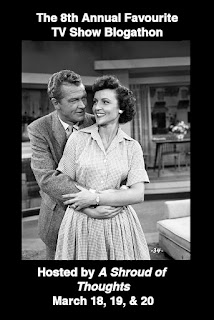The UK paper The Telegraph published a piece about the top ten films children must see before they are 9-1/2.
"The line-up, compiled by child psychologist Dr Kairen Cullen, was based not
only on entertainment value, but also the films' moral themes in order to
teach children “essential life-lessons”.
"The hardest lessons children have to learn are not the sort that fit
neatly into the school curriculum or can be found in any parenting guides.
These lessons relate to emotion and relationships; both of which lie at the
heart of any good film," said Dr Cullen."
I read the article with interest even though my kids passed the 9-1/2 mark some time ago wondering how my parenting through movies agenda stacked up alongside Dr. Cullen's list.
Sid and Buzz
1. Toy Story
Check. We took Janet to see Toy Story when it was released. Of course, since we were all seeing it for the first time we didn't know what lessons might be gleaned from the movie. She displayed sympathy for Buzz Lightyear when he came to the realization he was only a toy. Gavin is still waiting for his Woody and Buzz toys to start walking around on their own.
2. The Lion King
Check. Janet saw The Lion King at the theatre with friends. She learned the words to The Lion Sleeps Tonight. Gavin saw the movie (many times) on VHS/DVD. At an early age he would look at bugs and say things like "Oh, the little cream-filled kind." When you live with an echolalic autistic/developmentally delayed person it is really important that you know what they are watching.
3. Home Alone
Check. I wasn't thinking about the "importance of family" when I made the kids watch this one. I wanted to share the hilarious slapstick mayhem of the booby-trapped house. I fulfilled my parental duty by informing them that no actors were harmed in the making of the film.
4. Labyrinth
I haven't seen this one. Sounds good. Have to check it out sometime.
5. The Jungle Book
Check. One of my all-time favourites. I had the only babies at the park who could scat. So proud.
6. Mary Poppins
Check. The Daddy Man has a thing for Julie Andrews. Like father, like son.
7. The Wizard of Oz
Check. One of the great perks of being a parent is scaring the bejeezus out of kids by showing them the flying monkeys.
8. The Neverending Story
I think my daughter saw this on a rental. I couldn't get through it.
9. Matilda
Another I think Janet saw without me. I'm not a big Roald Dahl fan.
10. Up
A 19 year old Janet made me watch this. We cried and laughed and laughed and cried. I'm not certain it would have appealed to her in those pre-10 years.
Rita and Gene
During their formative years my kids were exposed to a lot of classic movies through Family Channel Canada regularly showing musicals, comedies and dramas from the Golden Era of Hollywood (a practice sadly long since abandoned) and mom and dad sharing personal favourites.
On their own Janet discovered Singin' in the Rain and an adoration for Gene Kelly while Gavin found Cover Girl and a passion for Rita Hayworth.
Dad Garry enjoys Lilies of the Field and before we knew it Gavin was singing Amen and borrowing the tape to spend time with his pal Homer Smith.
The stuff that dreams are made of
My attempt to share the many joys of The Thing from Another World with young Janet, along with imparting significant life lessons in dealing with hostile extraterrestrials, inexplicably caused nightmares. She forgave me when I introduced her to The Court Jester.
Another normal day for Donald Duck
The top 3 rentals during Janet and Gavin's toddler-hood were 101 Dalmatians which taught them to beware of smokers, Winnie-the-Pooh and the Blustery Day which taught them to beware of heffalumps and woozles, and The Three Caballeros. Donald's surreal adventures in Latin America did not mess with their minds in any way. I'm pretty sure. Anyway - too late now.

























